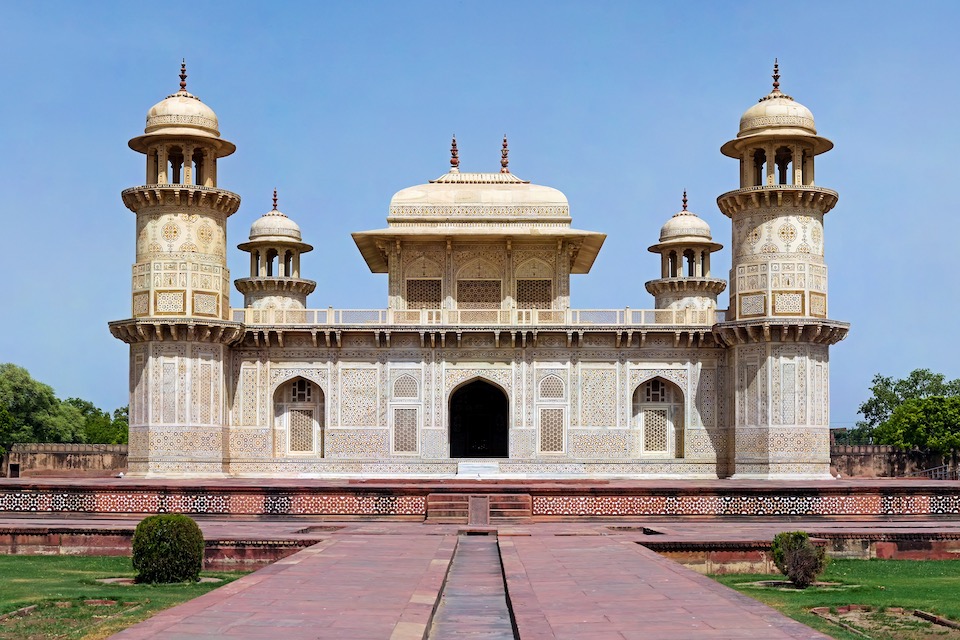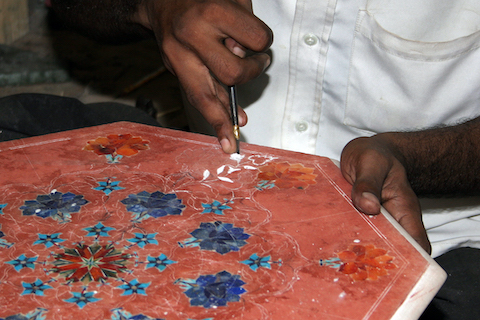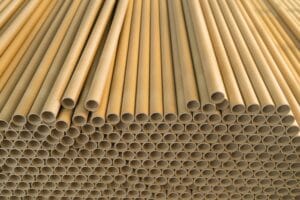Parchin Kari, An Exquisite Mughal Art!
The Taj Mahal is universally recognised as an enduring symbol of love. A testament to Emperor Shah Jahan’s profound affection for his wife Mumtaz Mahal. The romantic story behind its creation, a grieving emperor pouring his heart and resources into a magnificent mausoleum. This resonates deeply with people across cultures and generations. However, this narrative often overshadows the incredible artistry and craftsmanship that went into its construction. One in particular, the intricate Parchin Kari work.

The Legacy of Parchin Kari
Parchin Kari, the Mughal Indian iteration of Pietra dura, stands as a profound testament to the subcontinent’s rich artistic heritage. This meticulous craft represents a confluence of skill, patience, and aesthetic sensibility. Beyond the Taj Mahal, this exquisite craft adorns other significant heritage sites such as the Agra Fort, the Red Fort, and the Tomb of itimad-ud-daulah (often called the “Baby Taj”). These monuments showcase delicate floral and geometric designs rendered in precious and semi-precious stones. They also highlight the historical mastery of Parchin Kari craftsmanship.
For generations, artisans in India have painstakingly transformed hard stones like lapis lazuli, carnelian, jade, and mother-of-pearl into breathtaking inlays. This tradition reached its zenith under the Mughal emperors, becoming a testament to patience and a symbol of imperial grandeur. Historically, Parchin Kari was a highly valued skill, passed down through generations within artisan families. Apprenticeships began at a young age, with years dedicated to mastering the delicate techniques of cutting, shaping, and setting the stones. The hands of these artisans held deep knowledge, an intuitive feel for the stone, and an understanding of how each piece contributed to the overall masterpiece.
Modern Challenges that are keeping the Craft at a Crossroads
However, present-day observations suggest that the sustained practice of traditional Parchin Kari faces significant challenges, prompting necessary questions about its future. In an increasingly fast-paced world, the dedication and patience required for the craft often seem at odds with the aspirations of younger generations. The lure of more readily available, and often more lucrative, opportunities in urban centres and modern industries pulls potential apprentices away from traditional family trades. The perception that this craft offers limited financial security and career progression can be a strong deterrent.
The Erosion of Patronage and Knowledge
Furthermore, the traditional patronage from royal families and grand architectural projects that once sustained the art form has diminished. While there’s still a demand for authentic, high-quality marble inlay, competition from mass-produced or machine-assisted alternatives poses a threat. Though lacking the soul and artistry of handcrafted work, these alternatives can devalue the unique skills of traditional artisans.
A critical concern is the silent loss of knowledge. With fewer young people entering the craft, the intricate techniques honed over centuries risk being lost. Each retiring artisan takes with them a wealth of experience that is difficult to replicate; solely from books or modern training programs.

Sustaining the Legacy, some Efforts and Hopes
While Parchin Kari is undoubtedly facing serious challenges related to a shrinking workforce, financial difficulties, and changing market dynamics, its preservation is still possible. The future likely depends on addressing the socio-economic challenges faced by these artisans. And finding ways to make the craft appealing and viable for future generations.
There isn’t a single, large-scale national initiative solely dedicated to Parchin Kari. However, the Indian government, along with state authorities and various organisations, supports its preservation through broader schemes. Key efforts include Uttar Pradesh’s “One District One Product” (ODOP) scheme, which promotes Agra’s Parchin Kari through financial aid, skill development, and market access. Government schemes for promoting handicrafts and exports, though evolving, also indirectly benefit the art.


Furthermore, initiatives focused on skill development and heritage tourism often incorporate the preservation of traditional crafts like Parchin Kari. Organisations like UNESCO are also involved in projects in Agra aimed at revitalising the craft by empowering artisans and fostering sustainable heritage tourism. Despite these efforts, challenges remain in effectively supporting artisans and ensuring the craft’s long-term viability.
The potential loss of Parchin Kari artisans would represent a significant cultural impoverishment. These unique skills, passed down through generations, are irreplaceable. It falls upon us, consumers, policymakers, and art enthusiasts alike, to recognise the urgency of the situation. By actively supporting their work through ethical purchasing, advocating for supportive policies, and fostering a renewed appreciation for this exquisite craft. We can collectively help ensure that the legacy of Parchin Kari endures, carried forward by its dedicated practitioners.
The article has been curated by and/or for Nature Arc
For more articles like this visit our journal page by clicking here.




